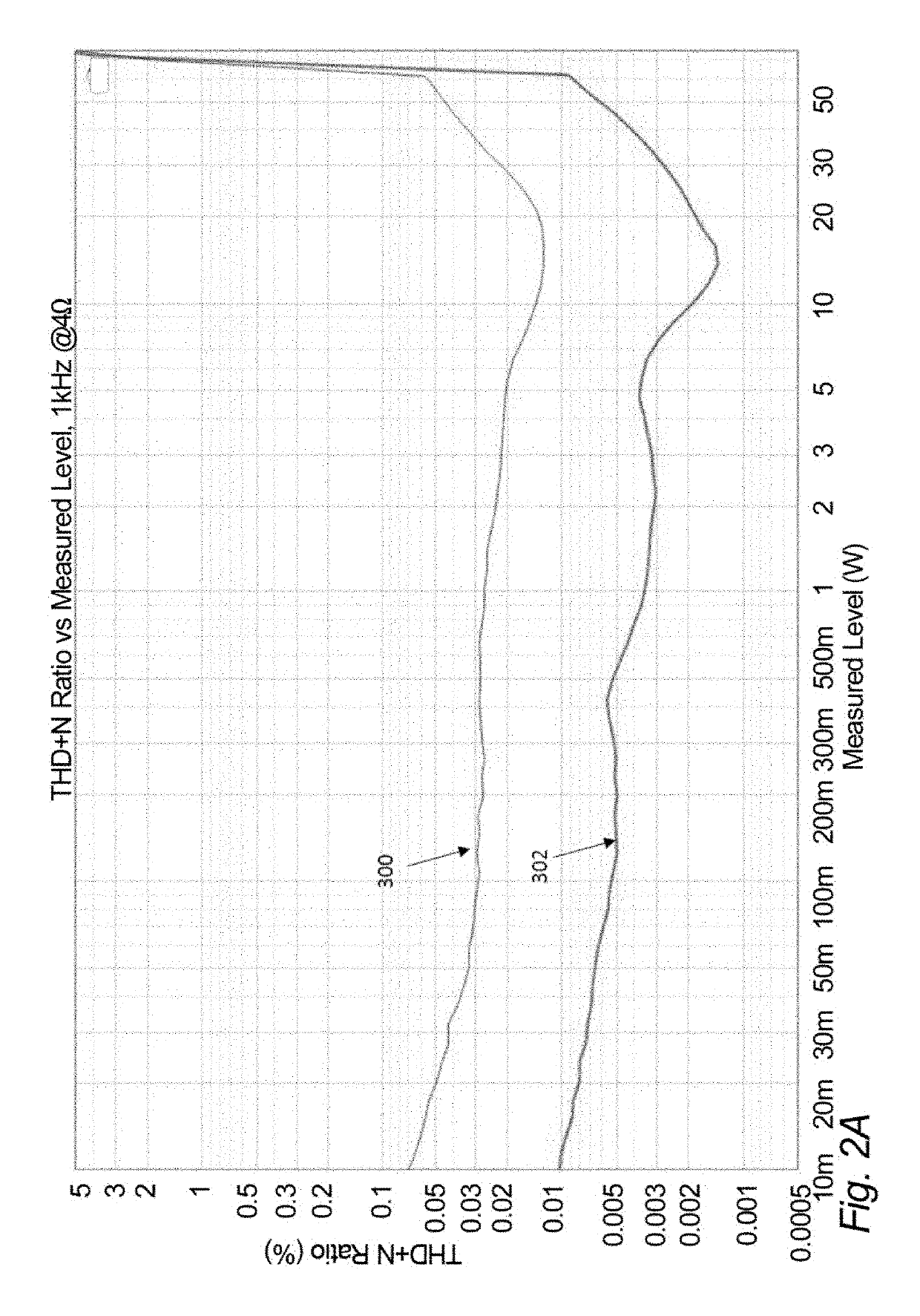Class-D power amplifier nested inside low-noise differential op-amp feedback loop
a power amplifier and feedback loop technology, applied in the field of class-d power amplifiers, can solve the problems of inability to handle thermal, inability to reduce noise influence, and inability to reduce audio signal, so as to reduce total harmonic distortion, reduce johnson noise, electronic noise
- Summary
- Abstract
- Description
- Claims
- Application Information
AI Technical Summary
Benefits of technology
Problems solved by technology
Method used
Image
Examples
Embodiment Construction
[0032]Various non-limiting embodiments provide a power amplifier integrated circuit (IC) that is nested inside a feedback loop of a low noise differential operational amplifier (op-amp); where the power amplifier may be a Class-D power amplifier. By nesting a Class-D IC inside the loop of a low noise differential op-amp the total harmonic distortion plus noise (THD+N), direct current (DC) precision and noise performance is mainly dictated by the differential op-amp. Since the Class-D IC may be controlled by a driving differential op-amp which is physically a separated IC, non-linearity and distortion caused by thermal changes which normally appear in the audio band of conventional amplifier circuits can be eliminated. Additionally, to maintain low noise caused by thermal fluctuations (i.e., low Johnson noise) over the audio band, resistor values are set extraordinary low. In at least one example, another nested feedback input stage, within a current drive circuit, with a diamond buf...
PUM
 Login to View More
Login to View More Abstract
Description
Claims
Application Information
 Login to View More
Login to View More - R&D
- Intellectual Property
- Life Sciences
- Materials
- Tech Scout
- Unparalleled Data Quality
- Higher Quality Content
- 60% Fewer Hallucinations
Browse by: Latest US Patents, China's latest patents, Technical Efficacy Thesaurus, Application Domain, Technology Topic, Popular Technical Reports.
© 2025 PatSnap. All rights reserved.Legal|Privacy policy|Modern Slavery Act Transparency Statement|Sitemap|About US| Contact US: help@patsnap.com



